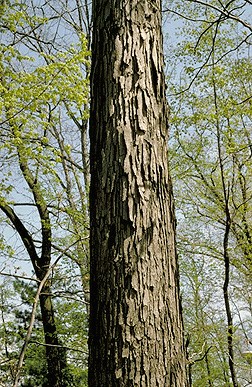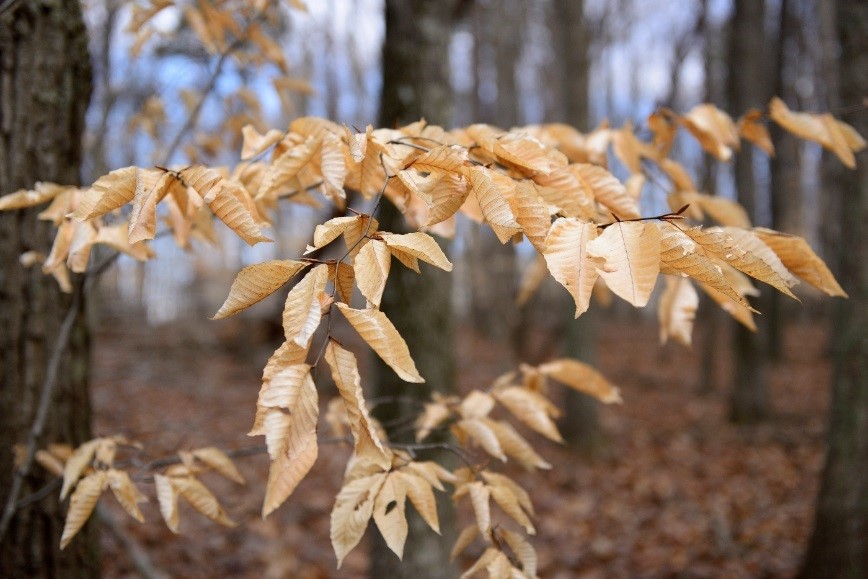On March 3rd…
we were joined by Dr. Sarah Hall, Chair of the Agriculture and Natural Resources Department at Berea College, for a winter tree identification session–the first of many themed Saturday hikes. An inter-generational crowd gathered in front of the Center anxiously awaiting Dr. Hall to begin. Our slow walk began at the base of the trails where Dr. Hall started by teaching us about shagbark hickory (Carya ovata). Its distinct shaggy, peeling bark is easily recognizable, but comparable to shellbark hickory (Carya laciniosa), where the differences lie in the shape of the nut.

As we continued, Dr. Hall mentioned some of the common uses for species she identified. White oaks (Quercus alba) have a pale bark with many tyloses that result in less permeable wood. Because of this, they are commonly used for bourbon barrels. A good way to identify white oak is to look at the way the bark peels back. In this species, the bark peels to the side, yet does not have the same shaggy look like that of the hickories we saw.
Eastern white pine (Pinus strobus) is less difficult to identify. An easy way to do so is by looking at its branch arrangement. Its whorled branching means that it produces branches that wrap around the trunk in circles, which could be counted to roughly estimate the age of the tree. In addition, one can look at each fascicle and note the amount of needles in each bunch. One bundle should have five relatively long needles.
Though deciduous, American beech (Fagus grandifolia) usually keeps its leaves during the winter despite their decay. This leaf retention is called marcescence. Its smooth, light bark is another good way to identify it, and because of its height, these trees are easily seen when walking through the BC Forest with their smooth bark and pale yellow leaves.

Full parking lots at the Center are common during the warm summer days but rare in the middle of winter. Though the sun was out, the day was chilly. Despite the temperature, it was encouraging to see community members interested in their natural surroundings and willing to spend a couple hours of their Saturday to learn about winter tree identification.


0 Comments